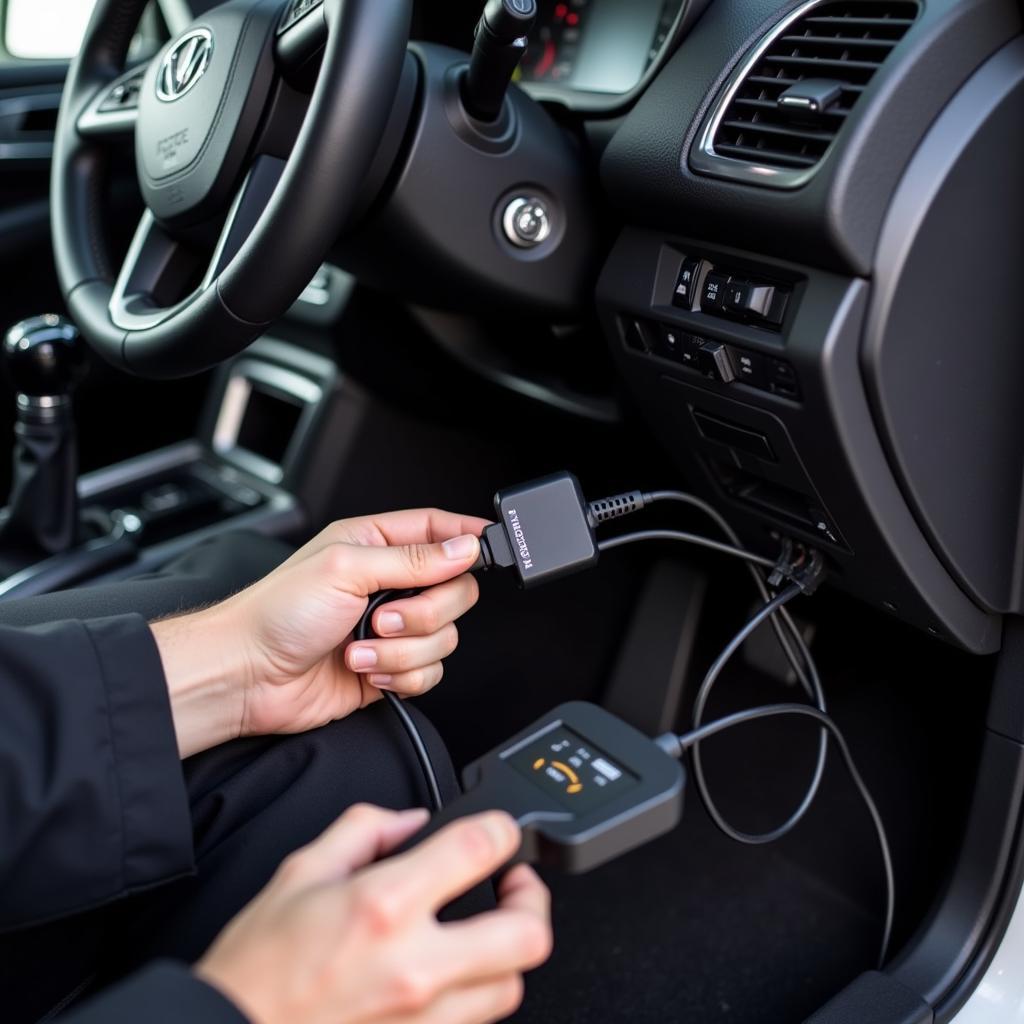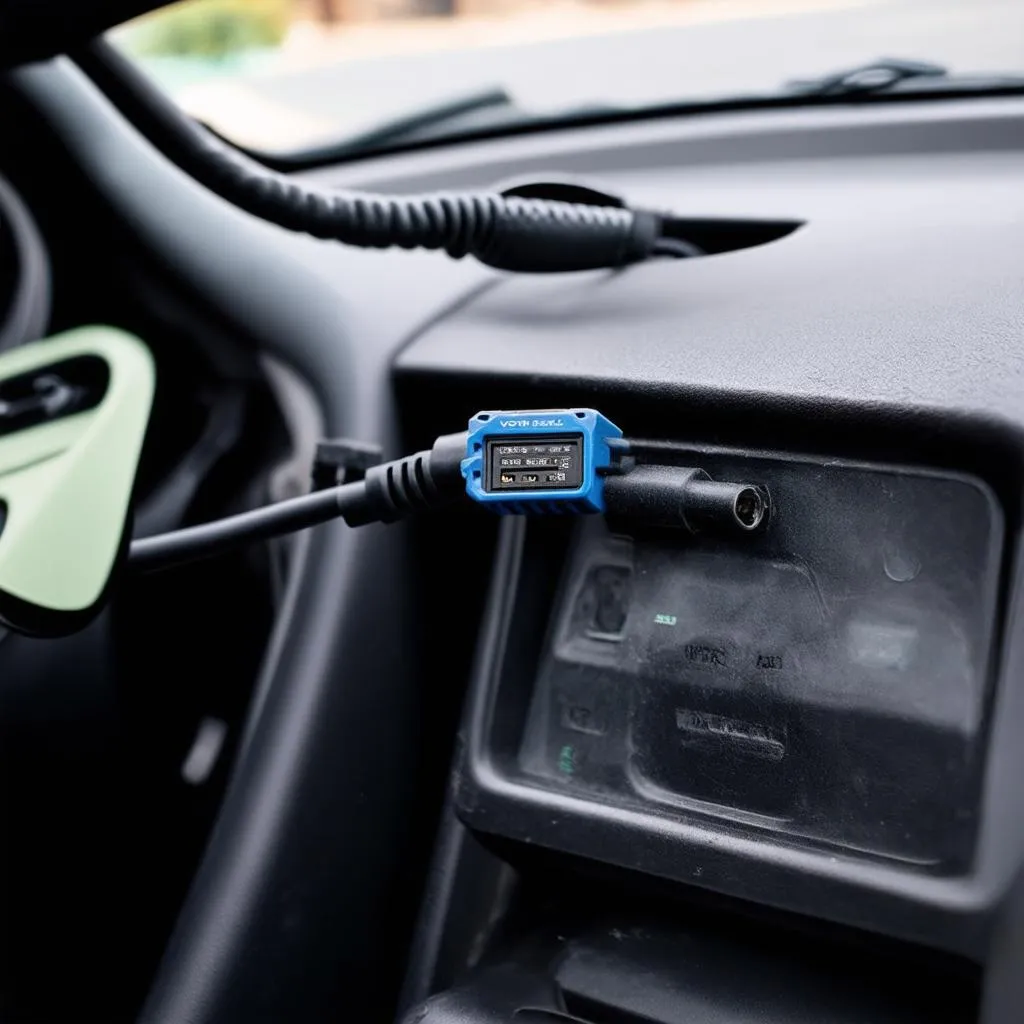VCDS USB interfaces have become indispensable tools for diagnosing, programming, and troubleshooting Volkswagen, Audi, Seat, and Skoda vehicles. This guide delves into the world of VCDS USB, exploring its capabilities, benefits, and common uses. We’ll cover everything from basic diagnostics to advanced coding and adaptations, empowering you to take control of your car’s maintenance and unlock its hidden potential.
What is a VCDS USB Interface?
A VCDS (VAG-COM Diagnostic System) USB interface is a diagnostic tool that connects your computer to your vehicle’s onboard computer. It allows you to read and clear fault codes, monitor live data streams, perform coding and adaptations, and much more. Unlike generic OBD-II scanners, VCDS USB provides dealer-level functionality, offering unparalleled access to your car’s systems. This powerful tool empowers you to diagnose and fix issues that generic scanners might miss.
Why Choose a VCDS USB Interface?
VCDS USB offers significant advantages over generic OBD-II scanners. It provides access to all vehicle systems, including engine, transmission, ABS, airbags, and more. This comprehensive coverage allows you to pinpoint the root cause of complex issues quickly and efficiently. Additionally, VCDS USB enables advanced functions like coding and adaptations, allowing you to customize your car’s features and optimize its performance. Think of it as having a direct line to your car’s brain, giving you unprecedented control over its functionalities. Similar to the vcds usb library version 03.02 07, this tool is regularly updated to support newer vehicle models and features.
Getting Started with VCDS USB
Using a VCDS USB interface is straightforward, even for beginners. First, you’ll need to install the VCDS software on your Windows computer. Next, connect the interface to your car’s OBD-II port and launch the software. Once connected, you can begin diagnosing and troubleshooting your vehicle. The intuitive interface makes navigating through the various modules and functions a breeze. Remember to always refer to the official Ross-Tech documentation for detailed instructions and safety precautions.
Common Uses of VCDS USB
VCDS USB can be used for a wide range of diagnostic and programming tasks. Here are some common uses:
- Reading and Clearing Fault Codes: Identify and clear diagnostic trouble codes (DTCs) from all vehicle systems. This allows you to pinpoint the source of malfunctions and reset warning lights.
- Monitoring Live Data Streams: Observe real-time data from various sensors and actuators, providing valuable insights into your car’s performance.
- Performing Coding and Adaptations: Customize your car’s features, such as enabling convenience features, adjusting lighting settings, and optimizing various system parameters.
- Troubleshooting Electrical Issues: Diagnose complex electrical problems by monitoring wiring diagrams and measuring voltage and resistance values.
Troubleshooting VCDS USB Connection Issues
Occasionally, you might encounter issues connecting your VCDS USB interface. These issues can range from driver problems to faulty cables. Refer to online resources and forums for troubleshooting tips and solutions. This is similar to the situation described in vcds usb cable, which explains cable-related issues. Check if the drivers are installed correctly and consult the ross-tech vcds usb driver installation for windows 10 guide for further assistance. Common issues include “interface not found” errors, which are often addressed in articles like vcds usb interface not found and vcds usb not found.
 Troubleshooting VCDS USB Connection Issues with a Laptop
Troubleshooting VCDS USB Connection Issues with a Laptop
Conclusion
VCDS USB interfaces are essential tools for anyone looking to delve deeper into their Volkswagen, Audi, Seat, or Skoda vehicle’s diagnostics and programming. From reading and clearing fault codes to performing advanced coding and adaptations, VCDS USB empowers you to take control of your car’s maintenance and unlock its full potential. By understanding its capabilities and following the guidelines in this guide, you can effectively use VCDS USB to diagnose, repair, and customize your vehicle.
FAQ
- What vehicles are compatible with VCDS USB? VCDS USB is compatible with most Volkswagen, Audi, Seat, and Skoda vehicles.
- Do I need any special software to use VCDS USB? Yes, you need to install the VCDS software on your Windows computer.
- Can I damage my car by using VCDS USB? While unlikely, incorrect coding or adaptations could potentially cause issues. Always follow instructions carefully and back up your original coding before making changes.
- Where can I find support for VCDS USB? Ross-Tech, the developers of VCDS, provide extensive documentation and support on their website.
- Is VCDS USB suitable for beginners? Yes, the intuitive interface and comprehensive documentation make it accessible to users of all levels.
- What is the difference between VCDS USB and generic OBD-II scanners? VCDS USB offers dealer-level functionality and access to all vehicle systems, while generic scanners typically provide limited access.
- How often should I update my VCDS software? It’s recommended to update your VCDS software regularly to ensure compatibility with the latest vehicle models and features.
Need support? Contact us via Whatsapp: +1 (641) 206-8880, Email: [email protected] Or visit us at: 276 Reock St, City of Orange, NJ 07050, United States. We have a 24/7 customer support team.


